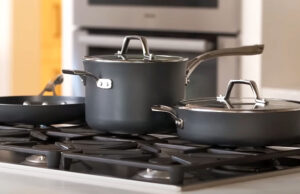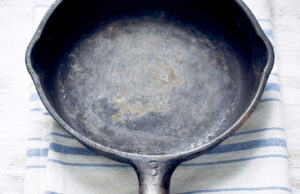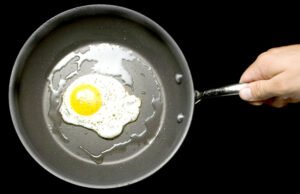As an Amazon Associate, I earn from qualifying purchases at no extra cost to you.
Whirlpool Dishwasher Soak and Clean Cycle Time: Expert Guide
You know how annoying it feels when dishes come out of the dishwasher still dirty or cloudy? I had the same problem until I used the Whirlpool dishwasher soak and clean cycle. This cycle saved my time and made my dishes sparkling clean without scrubbing. In this article, I will share everything I learned about this amazing feature. You will find the full cycle time, how it works, and how to use it the best way for clean dishes every time.
What is the Soak and Clean Cycle on a Whirlpool Dishwasher
The soak and clean cycle on a Whirlpool dishwasher is a special feature that helps clean very dirty dishes. It is perfect when you have dishes with dried food or sticky mess that won’t come off easily.
Many people think you must wash or soak dishes before putting them in the dishwasher, but that’s not true with this cycle. This setting does the soaking for you. It adds extra time and water to break down food and stains before the main wash starts.
In my case, I had a pot with stuck-on pasta sauce that I left out overnight. I placed it in the dishwasher and used the soak and clean cycle. When the cycle ended, the pot came out shiny and clean like new. No scrubbing at all. That’s when I started using this feature more.
This cycle works by starting with warm water and gently soaking the dishes. Then it slowly increases the temperature and sprays the dishes with water and detergent. It gives more time to clean and rinse dishes than regular cycles. That is why it’s great for big loads with greasy or hard food mess.
The total time of this cycle can take up to 3.5 to 4 hours. Yes, it sounds long, but it saves you time because you don’t have to rinse or scrub anything before. The dishwasher does all the hard work. You just need to load it properly and choose the soak and clean setting.
This setting is helpful when you have cooked meals for a party, used many dishes, or forgot to wash pans the same day. It handles all that dirt with ease. You don’t need to panic or feel tired thinking about washing by hand.
Here is what I learned from using it again and again:
- Don’t overload the racks.
- Always face dishes toward the spray arms.
- Use good quality dishwasher detergent.
- Don’t mix plastic and metal too close together.
- Make sure no large food bits are stuck.
It’s also great for saving water. Even though the cycle takes longer, it uses less water than pre-rinsing by hand.
- Soak and clean is made for dirty dishes.
- Takes about 3.5 to 4 hours.
- Removes stuck food without scrubbing.
- Soaks, heats, and washes better than regular cycles.
- Saves water and effort.
How to Use the Whirlpool Dishwasher Soak and Clean Cycle Properly
Using the soak and clean cycle is simple, but there are a few things you should do right to get the best results. First, make sure your dishes are loaded correctly. Don’t just throw them in. Each dish must have space so water can reach it. When I started doing this right, my dishes came out cleaner every time.
Always place large items like pans and bowls on the bottom rack. Put smaller things like glasses and cups on the top rack. Silverware should go in the basket, with some facing up and some down. This helps water reach every side.
Next, don’t block the spray arms. These are the spinning arms at the bottom and top of the dishwasher. If you place a large tray in front of it, water can’t reach the dishes around it.
Now let’s talk about detergent. Use a good quality one. I once tried a cheap brand, and the dishes came out dull. I switched to a trusted pod, and the change was clear. The detergent needs to be strong enough to break down grease and food, especially in this long cycle.
You don’t have to soak or rinse dishes before placing them inside. That’s the job of this cycle. But make sure you scrape off big pieces of food like bones or peels. Those can block the filter or spray arms.
Once your dishwasher is loaded, choose the soak and clean cycle on your control panel. On some models, you may need to press a few buttons or select it through a display screen. If you are not sure, check your manual. I found my button right next to the normal cycle option.
The cycle will start with warm water and low spray. This is the soaking part. It helps to soften dried food. After that, the water gets hotter, and the cleaning sprays begin. The dishwasher will go through different stages like soaking, washing, rinsing, and drying.
Even though it takes time, you don’t have to do anything else. Just start it and leave it. I often run it before going to bed or when I go out, so I don’t feel the waiting.
Also, make sure the dishwasher door is closed tightly. If the door is not shut properly, the cycle won’t start.
- Load dishes with space between them.
- Place big items on the bottom, small ones on the top.
- Don’t block spray arms.
- Use high-quality detergent pods or powder.
- No need to pre-rinse, just scrape off large food bits.
- Choose soak and clean from the control panel.
- Let it run fully without opening the door.
What is the Full Time of Soak and Clean Cycle
The full soak and clean cycle can take between 3.5 to 4 hours. This may sound long, but it is worth it for very dirty dishes. The cycle includes different stages that all take time to do properly. It’s not just washing. It’s soaking, heating, scrubbing with water jets, rinsing, and drying.
The soaking part takes around 30 to 40 minutes. This softens the dried or sticky food on your plates and pans. After soaking, the dishwasher moves to the wash stage. This can last 60 to 90 minutes, depending on how full your dishwasher is and how dirty the dishes are.
Then comes the rinse stage. This is when the hot water washes away the dirty soap and food bits. It usually takes around 30 minutes. Finally, the drying stage starts. The dishwasher uses heat or fan to dry the dishes. This can take another 40 minutes to an hour.
Sometimes people think the dishwasher is broken because it’s taking too long. But it’s not broken. It’s just doing its job slowly and deeply. The reason it takes more time is because it gives better cleaning, especially for dishes with baked-on or greasy food.
The sensor inside the dishwasher checks how dirty the water is. If the water is still cloudy or has food particles, the cycle will continue until it gets clean. So, the time may change slightly every time you use it.
Also, the water temperature matters. If your home has cold water in the pipes, the dishwasher will take more time to heat it. This can add 10 to 20 minutes more.
Don’t open the door while the cycle is running. This can pause or reset the cycle and waste time.
I have noticed that even though it takes more time, the soak and clean cycle saves me time later. I don’t need to rewash anything or clean by hand. Everything comes out clean, dry, and ready to put away.
- Total time is around 3.5 to 4 hours.
- Includes soaking, washing, rinsing, and drying.
- Longer than normal cycle but gives deep cleaning.
- Sensor checks water dirt level and adjusts time.
- Cold water in pipes can increase time.
- Do not open the door during the cycle.
What Dishes Work Best in This Cycle
This cycle is great for dirty dishes, but not all dishes are made for it. Some delicate items can get damaged in this long and hot cycle. I learned this after my plastic food container got warped once.
Use this cycle mainly for:
- Pots and pans with baked-on food
- Plates with greasy or dried food
- Bowls with sticky sauces
- Cooking trays and casserole dishes
- Silverware with stuck bits
Avoid using it for:
- Plastic items not marked as dishwasher-safe
- Wooden spoons or cutting boards
- Crystal glasses
- Thin or light plastic cups
The high heat and long cycle can damage delicate materials. I always check the bottom of plastic items to see if they say ‘dishwasher safe’. If not, I wash them by hand.
Metal pans come out very clean and shiny after this cycle. If you use non-stick pans, make sure they are dishwasher safe too. Some non-stick layers can peel off with strong heat.
Another tip is to avoid mixing heavy dirty pans with very light items. The pans can block the water from reaching small items. I try to run this cycle with similar items together.
If I have a very greasy load after cooking something big, I use the soak and clean cycle for all the dishes from that meal. I avoid mixing clean-looking plates just to fill space. This helps focus the power where it’s needed most.
- Best for dirty pots, pans, bowls, plates, and silverware.
- Not good for wood, light plastic, or crystal.
- Check if items are dishwasher safe before using this cycle.
- Don’t mix heavy and light items too close.
- Use for same-type dirty items together.
When Should You Use the Soak and Clean Cycle
You should use the soak and clean cycle when your dishes are very dirty. This includes times when:
- You cooked greasy or saucy food
- You let dishes sit for a day or more
- Food is baked or stuck on pans
- You cooked a big family meal
- You didn’t rinse the dishes before loading
This cycle is not needed every time. For light mess, the normal or quick cycle is enough. But when the mess is heavy, using this long cycle is the smart choice.
I used to think I had to scrub everything before loading. Now I know I can just use this setting and relax. It’s perfect after holiday meals, dinner parties, or lazy weekends when dishes pile up.
Also, if your dishes come out dirty even after running the normal cycle, try this setting next time. You will likely see a big difference.
- Use it for greasy, baked-on, or old food mess.
- Great after cooking big meals.
- No need to scrub or rinse dishes first.
- Saves time after heavy meal days.
- Not for every load, only very dirty ones.
Tips to Get the Best Cleaning Result
If you want the best cleaning result every time, follow these tips:
- Load dishes properly.
- Use a rinse aid for better drying.
- Choose good detergent pods or tablets.
- Scrape large food chunks before loading.
- Don’t overload racks.
- Keep spray arms clean.
- Run hot water in your sink first to warm up water line.
Also, clean your dishwasher filter once a week. If the filter is dirty, the water will stay dirty too. That means your dishes won’t get clean.
Keep the inside of the dishwasher clean too. Run an empty cycle with vinegar once a month. This clears any buildup and keeps it fresh.
Sometimes, I add baking soda before running the cycle. This helps remove any smells and boosts cleaning power.
- Load dishes the right way.
- Use rinse aid and good detergent.
- Clean filter and spray arms often.
- Scrape food but don’t rinse.
- Use vinegar or baking soda monthly.
Final Thoughts
Using the Whirlpool dishwasher soak and clean cycle changed how I clean dishes. It saves time, gives better cleaning, and lets me skip scrubbing. Even though the cycle is long, it does everything for you. It’s great for heavy messes and dishes that would normally need soaking in the sink. Try it once, and you’ll see how easy and helpful it is.
| Feature | Details |
|---|---|
| Cycle Name | Soak and Clean |
| Best For | Heavy food mess, stuck-on food |
| Total Time | 3.5 to 4 hours |
| Soak Time | 30-40 minutes |
| Wash Time | 60-90 minutes |
| Rinse Time | Around 30 minutes |
| Drying Time | 40-60 minutes |
| Detergent Type | High-quality pods or powder |
| Use Rinse Aid? | Yes, for better drying |
| Safe for Plastic? | Only if marked ‘dishwasher safe’ |
| Not Recommended Items | Wood, crystal, thin plastic |
| Water Temperature | Hot water improves cycle speed and clean |
| How Often to Use | Only for heavy dirty dishes |
| Energy Usage | Slightly more than normal cycle |
| Water Usage | Less than hand washing with soak |
Frequently Asked Questions (FAQs)
Is it okay to use the soak and clean cycle every day?
It is okay to use it often, but you don’t need it every day. This cycle is made for heavy food mess or stuck-on dirt. If you run it daily for light messes, you might waste time and energy. For daily dishes with light dirt, use the normal cycle. Save the soak and clean option for when the mess is bad, like after cooking meat, baking, or letting dishes sit for too long.
Can the soak and clean cycle damage my dishes?
Yes, it can damage certain items if they are not dishwasher safe. This cycle uses high heat and runs for a long time, which is not good for wood, crystal, or thin plastic. Always check if the item says ‘dishwasher safe’ at the bottom. If not, wash it by hand. I learned this after one of my plastic lids melted slightly in the cycle.
Do I need to use special detergent for this cycle?
You don’t need special detergent, but using high-quality detergent is important. Cheap ones may not work well for such a long and deep cycle. Pods or tablets made for tough grease and food will help get the best results. Also, don’t forget to use a rinse aid for better drying. It makes dishes come out shiny and spot-free.
Is it normal for the cycle to take over 4 hours?
Yes, it is normal. Depending on how dirty the dishes are and how cold the water is, the cycle may go a little over 4 hours. This is part of how it works. It checks if the water is clean and keeps running until it is. That means you get very clean dishes every time. So don’t worry if it takes longer sometimes.
Can I open the door during the soak and clean cycle?
It is not a good idea to open the door during the cycle. If you open it, the dishwasher may stop or reset. This can make the cycle longer or even cancel it. If you must open it, wait until the machine pauses or is not spraying. Then close it tightly so the machine can continue from where it left off.
Do I have to scrape food off before using this cycle?
Yes, you should scrape off big pieces of food like bones, seeds, or peels. But you do not need to rinse or wash the dishes. Just remove the large bits that could block the filter or spray arms. This keeps the water clean and helps the cycle do a better job. It also protects your machine from damage.
Is it better to run this cycle at night?
Yes, running the soak and clean cycle at night is a good idea. Since it takes around 4 hours, doing it at night saves time during your day. When you wake up, your dishes will be clean and dry. You don’t have to wait or keep checking the machine. It also helps lower energy use, as some places offer cheaper night electricity.
Can I use this cycle for every type of cookware?
No, not every type of cookware is safe for this cycle. Use it only for stainless steel, ceramic, or dishwasher-safe non-stick pans. Avoid wooden or cast iron cookware, as hot water and long washing can damage them. Also, hand-painted or gold-lined dishes can get faded. Always check if the cookware is safe for dishwashers before using this cycle.




